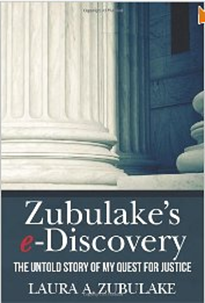eDiscovery Trends: Use of Internet-Based Tools, Predictive Coding, Up in 2012, Says ABA

According to a recently released report from the American Bar Association (ABA), use of Internet-based electronic discovery tools and predictive coding has risen in 2012. The 2012 ABA Legal Technology Survey Report: Litigation and Courtroom Technology (Volume III) discusses the use of technology related to litigation, ranging from hardware used in the courtroom to technology related to eDiscovery and e-filing. It includes a trend report summarizing this year’s notable results and highlighting changes from previous years.
Statistical Highlights
Here are some of the notable stats from the ABA study:
Use of Internet-based eDiscovery and Litigation Support
- 44% of attorneys whose firm had handled an eDiscovery case said they had used Internet-based eDiscovery tools (up from 31% in 2011 – a 42% rise in usage);
- In sole practitioner firms, 33% of attorneys said they had used Internet-based eDiscovery tools whereas nearly 67% of attorneys in large firms (500 or more attorneys) indicated they had used those tools;
- 35% of attorneys said they had used Internet-based litigation support software (up from 24% in 2011 – a 46% rise in usage).
Use of Desktop-based eDiscovery and Litigation Support
- Use of Desktop-based eDiscovery rose from 46% to 48% (just a 4% rise in usage) and use of Desktop-based Litigation Support remained the same at 46%.
Use of Predictive Coding Technology
- 23% of those attorneys said they had used predictive coding technology to process or review ESI (up from 15% in 2011 – a 53% rise in usage);
- Of the firms that have handled an eDiscovery case, only 5% of sole practitioners and only 6% of firms with less than 10 attorneys indicated they had used predictive coding technology whereas nearly 44% of attorneys in large firms said they used predictive coding.
Outsourcing
- 44% of attorneys surveyed indicated that they outsourced work to eDiscovery consultants and companies (slightly down from 45% in 2011 – a 2% drop);
- Outsourcing to computer forensics specialists remained unchanged at 42%, according to the survey;
- On the other hand, 25% of respondents indicated that they outsource to attorneys in other firms (up from 16% in 2011 – a 56% rise!). Hmmm…
All percentages rounded.
The 2012 ABA Legal Technology Survey Report is comprised of six volumes, with eDiscovery results discussed in Volume III (link above), which can be purchased from the ABA for $350 (or $300 if you’re an ABA member). If you’re just interested in the trend report, the cost for that is $55 ($45 for ABA members).
So, what do you think? Any surprises? Do those numbers reflect your own usage of the technologies and outsourcing patterns? Please share any comments you might have or if you’d like to know more about a particular topic.
Disclaimer: The views represented herein are exclusively the views of the author, and do not necessarily represent the views held by CloudNine Discovery. eDiscoveryDaily is made available by CloudNine Discovery solely for educational purposes to provide general information about general eDiscovery principles and not to provide specific legal advice applicable to any particular circumstance. eDiscoveryDaily should not be used as a substitute for competent legal advice from a lawyer you have retained and who has agreed to represent you.




